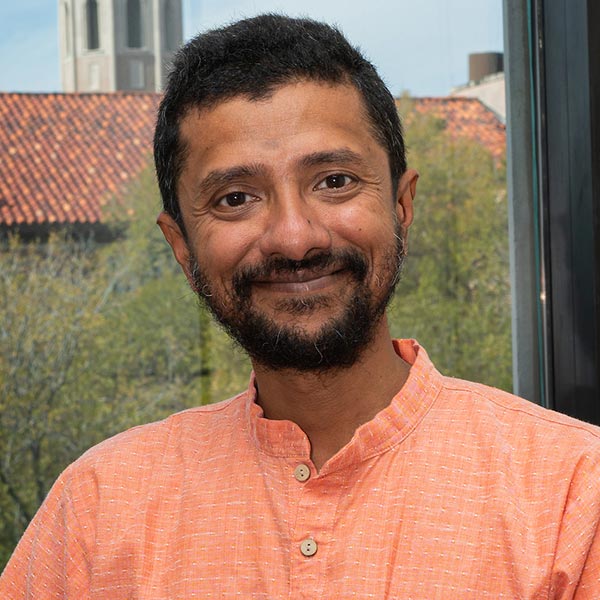Indian-American computer engineering and faculty of the George R. Brown School of Engineering at Rice University , Ashok Veeraraghavan, has been honoured with the prestigious Edith and Peter O’Donnell Award in engineering.
This awards recognizes and celebrated his revolutionary work in the field of imaging technology designed to imbue clarity abd better visibility in the invisible or obscured imaging.
 The Illustrious Honor
The Illustrious Honor
This significant recognition marks a notable achievement for the Indian-origin computer engineer, placing him among the recipients of one of Texas’ highest academic honours.
The Edith and Peter O’Donnell Award in engineering, presented by the Texas Academy of Medicine, Engineering, Science, and Technology (TAMEST) is the most distinguished honour presented to upcoming potential researchers, as a mark of acknowledgement and appreciation.
TAMEST recognized Ashok Veeraraghavan’s contributions and lauded his phenomenal efforts in his ground-breaking discovery of “ imaging technology that seeks to make the invisible visible,” thus conquering some major blind spots and hindrances.
This award is an annual recognition presented to outstanding researchers in the state who are actively involved in pioneering endeavours across various fields such as medicine, engineering, biological sciences, physical sciences, and technology innovation.
Veeraraghavan’s Revolutionary Research
Hailing from Chennai, where he spent a major part of his early life, Veeraraghavan, was brimming with joy upon this esteemed recognition and on receiving the award he said, “I am thrilled to be honoured in this way.
It represents acknowledgment for the exceptional and innovative research conducted by numerous students, postdocs, and research scientists in the computational imaging lab at Rice University over the past decade.”
Veeraraghavan’s computational imaging lab takes a comprehensive approach to research, addressing imaging processes from optical and sensory machine learning processing algorithms. The aim is to address imaging challenges that currently surpass the capabilities of existing technologies.
Seeing the Invisible
Veeraraghavan remarked that the majority of modern imaging systems are crafted without considering all these elements collectively; they are developed independently.”
He further emphasised, “Co-design introduces fresh dimensions of flexibility, enabling us to attain imaging functionalities or performance capabilities that would be unattainable otherwise.”
Professor Veeraraghavan’s study aims to find solutions for imaging scenarios where the visualisation target remains inaccessible to current imaging technologies due to the scattering of light in participating media.
 Ashok highlighted various instances, stating, “There are numerous examples of this phenomenon.” A good and commonly found illustration is when when driving a car in foggy conditions, our visibility is limited. The fog acts as the scattering medium. Similarly, in satellite imaging, clouds can serve as the scattering medium.
Ashok highlighted various instances, stating, “There are numerous examples of this phenomenon.” A good and commonly found illustration is when when driving a car in foggy conditions, our visibility is limited. The fog acts as the scattering medium. Similarly, in satellite imaging, clouds can serve as the scattering medium.
Additionally, in biological imaging, the skin becomes an obscurant, hindering the visibility of blood cells. Elucidating further, he observes that in all these situation, the primary obstacle arises from light interacting with participating media and scattering, resulting in the loss of crucial information about the intended image capture.
He believed that the imaging through scattering media poses as a pivotal barrier and challenges in the field of imaging.
‘Consequently, this is the central focus of my lab, and we have made substantial strides in addressing and resolving this intricate problem.’
Acclaims from Experts
Compliments from Rice’s executive vice president for research also arrived for the wondrous feat. Ramamoorthy Ramesh, professor of materials science and nanoengineering, physics and astronomy, commended Dr. Ashok and stated on the scarce research done on that domain.
Ramesh expressed his ecstasy in remarking that this acknowledgement feels special since its the second award in a row for faculty members. Last year, Jamie Padgett received the Edith and Peter O’Donnell Award, upholding the reputation of the University.
This award, comes at a time when the Indian-origin students in USA are living under a constant threat owing to the unusual deaths among them. These news sparks up the hopes of aspirants, chasing the American Dream.
Veeraraghavan’s contributions to the field of engineering continue to inspire and pave the way for future discoveries and innovations.











